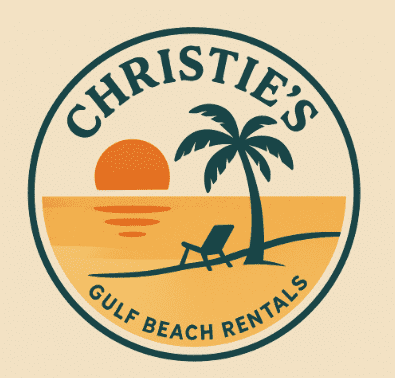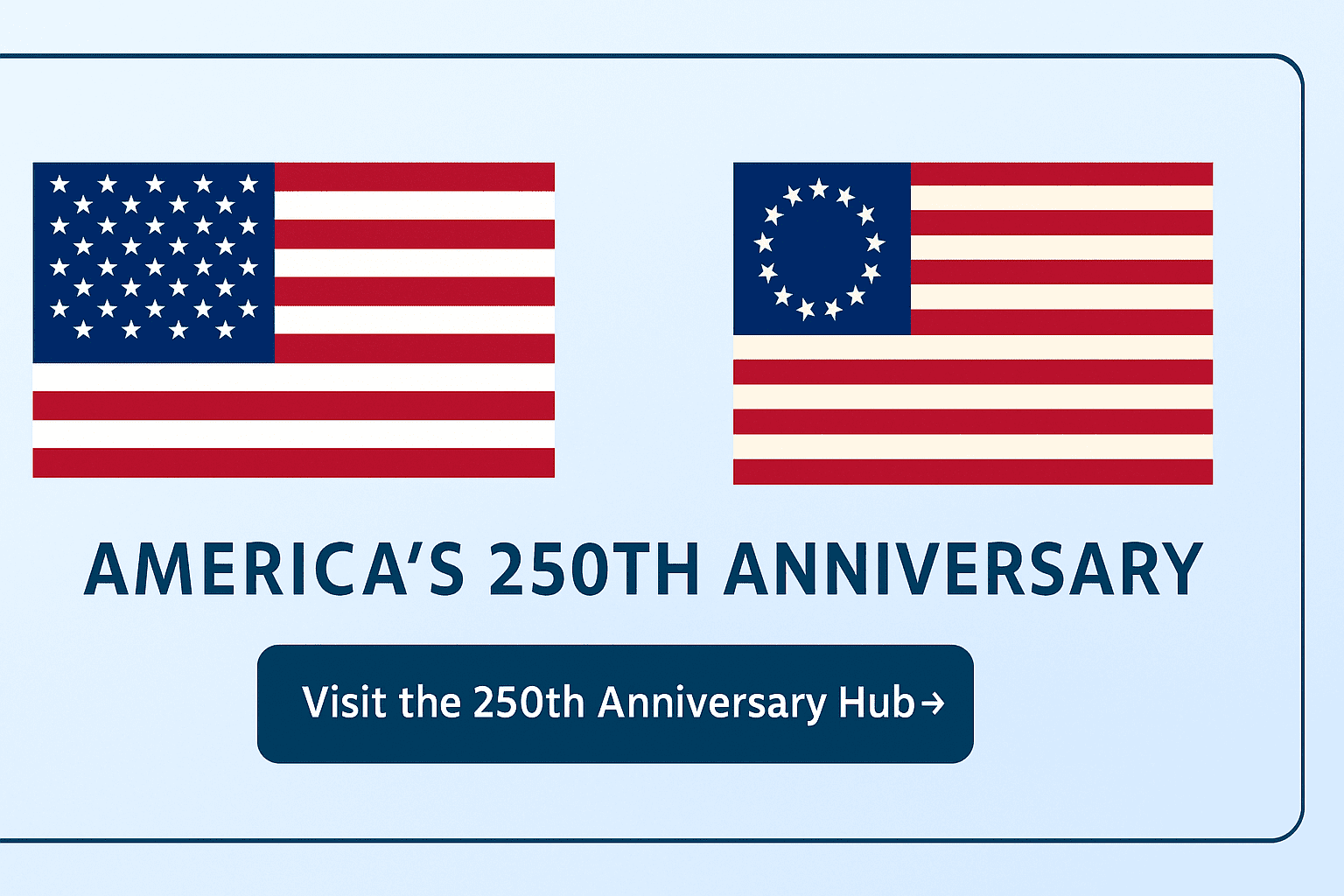Last updated on March 9th, 2025 at 12:24 am
Are you thinking about Starting a Business After Retirement and wondering whether you should register a trademark for your business name or logo? Or maybe you’ve already decided that a trademark is necessary. This article will break down the trademark process, explain its key aspects, and help you understand its importance. By the end, you’ll have the clarity you need to confidently take the next step.
Time for some education about Common Law, Trademarks, and Patients. I think that it is important you understand how you can protect your property. A little background will give you some idea about why many people seem to “get it” about trying to duplicate others’ efforts. Also, you are in a learning state since you are Starting a Business After Retirement.
This article is number 8 in our series about Starting a Business After Retirement. Click the button below to visit our index page and start reading from the first article and don’t miss any.
How long does it take to get an approved trademark?
12-18 months. That’s correct, a long time. Don’t panic, there are things you can do to protect your business while your application is pending. Of course, if you decide after reading this article that you need to file an application for a trademark, do not wait. Do it now or at least after reading this article. RetireCoast can help.
What do you need to do in the interim? Excellent question. Check at the bottom of this article for some steps to take during the application pending process. We have thought of everything for you.
The History of Common Law in Trademark and Patent Rights
Common law is a legal system based on judicial precedents rather than written statutes, originating in England and later adopted by the United States. It has played a significant role in shaping trademark rights and patent protections, especially before formal government registration systems were established.
1️⃣ Common Law and Trademarks
Origins of Common Law Trademark Rights
- Early English Law (16th-17th Century): In medieval England, guilds and merchants used distinctive marks to indicate the origin of goods. Courts began recognizing the right to exclusive use of these marks to prevent fraud.
- Pre-Statutory Protection: Before trademark laws were formally enacted, businesses had to rely on common law rights to protect their brand identity.
- Influence in the U.S.: The United States inherited this principle, allowing businesses to establish trademark rights through use, even without registration.
How Common Law Trademarks Work Today
- First-to-Use Rule: Under common law, trademark rights are granted to the first business to use a mark in commerce, rather than the first to register it.
- Geographic Limitations: Unlike federally registered trademarks, common law trademarks only provide protection in the geographic areas where they are actively used.
- Legal Protections: While weaker than federal trademarks, businesses with common law trademarks can still challenge others in court for unfair competition or passing off.
The Shift to Formal Trademark Registration
- The U.S. Trademark Act of 1881 was the first formal law governing trademarks, later replaced by the Lanham Act (1946), which created the modern federal trademark system under the USPTO (United States Patent and Trademark Office).
- Today, businesses can still rely on common law trademarks, but federal registration offers stronger legal protection, including nationwide exclusivity and a presumption of ownership.

2️⃣ Common Law and Patent Rights
Early History of Patent Rights
- Medieval England (15th-16th Century):
- The English monarchy granted exclusive rights (monopolies) to inventors through “letters patent”, allowing them to control and profit from their innovations.
- The Statute of Monopolies (1624) formalized patent law, ensuring that only genuine inventors could receive exclusive rights.
- Colonial and Early U.S. Patent Laws:
- The U.S. modeled its system after English patent law, with Article I, Section 8 of the U.S. Constitution giving Congress the power to grant patents.
- The Patent Act of 1790 was the first U.S. patent law, offering exclusive rights for 14 years to inventors.
Common Law Patent Rights vs. Modern Patent Law
- Unlike trademarks, common law patent rights are very limited today because patents require formal registration under the USPTO.
- Before modern patent systems, inventors had to
- Modern Patent Law (Post-19th Century):
- The Patent Act of 1836 created the U.S. Patent Office, centralizing patent applications.
- Today, patents must be officially registered with the USPTO to receive legal protection.
Why Common Law Doesn’t Apply to Patents Today
- Unlike trademarks, which can exist under common law, patents require official registration because they involve exclusive government-granted rights for a limited time (usually 20 years).
- If an inventor does not file a patent, they cannot claim exclusive rights under common law, meaning anyone else could use or patent the same idea.
3️⃣ Key Differences Between Common Law Trademarks and Patents
| Aspect | Common Law Trademarks | Common Law Patent Rights |
|---|---|---|
| Exists Without Registration? | ✅ Yes, rights begin upon use in commerce | ❌ No, patents must be registered |
| Legal Protection Scope | Limited to geographic area of use | No exclusive rights under common law |
| Can Be Enforced in Court? | ✅ Yes, but weaker than federal trademarks | ❌ No, patent rights require USPTO approval |
| Based on First Use or First to Register? | First-to-use principle applies | First-to-file principle applies |
| Government Involvement? | ❌ No (unless federally registered) | ✅ Yes, must be registered with USPTO |
4️⃣ Conclusion: Why Common Law Still Matters for Trademarks but Not for Patents
- Trademarks: Businesses can establish rights through common law use, but federal registration is still recommended for stronger legal protection.
- Patents: Inventors must file with the USPTO (U.S. Patent Office) to obtain exclusive rights—common law offers no legal protection.
Not yet created your business
For those reading this who have not yet created their business, RetireCoast has recommended in our series “Starting a Business After Retirement” that you should check the U.S. Patent Office to be sure that you are not using a name that has already been protected by an approved trademark.
If you have already created your business name in your state that means that there are no other businesses in that state permitted to use your name. However, you would not be permitted to do business with your name or logo in another state if a trademark exists.
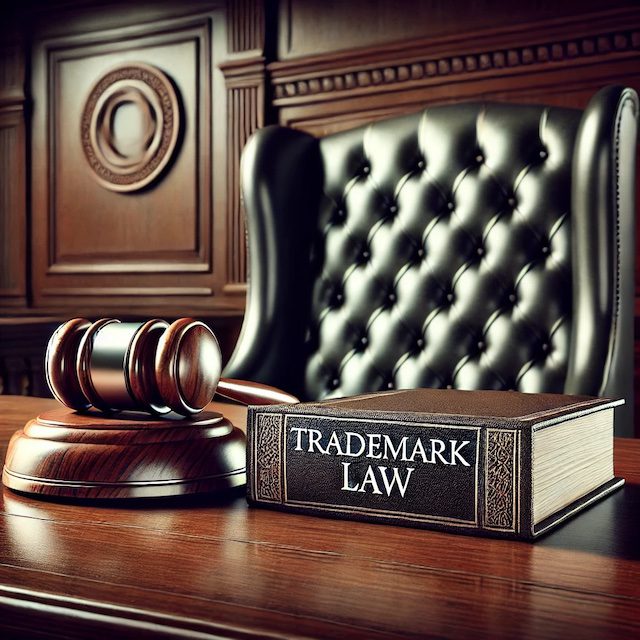
What is a Trademark and How Does It Provide Protection?
A trademark is a valuable asset that provides exclusive rights to a brand name, trade name, or logo, distinguishing a business entity from competitors. It gives small business owners legal protection against others using similar names that could confuse customers.
When a trademark is approved through the trademark registration process, the trademark owner gains legal rights to prevent trademark infringement within the United States. However, these trademark rights are territorial, meaning a registered trademark only applies in the U.S. unless the business owner applies for trademark protection in other countries.
Trademark Registration in the United States
The trademarking process begins with a trademark search to ensure that a similar trademark is not already in use. Filing a trademark application process with the United States Patent and Trademark Office (USPTO) is the next step. The trademark office reviews the application to confirm that the trademark meets legal requirements and is unique within its class of goods or services.
Why Small Businesses Should Consider a Trademark
For those starting a new business, whether a sole proprietorship, limited liability company (LLC) or partnership agreement, securing a registered trademark can be a good idea. It protects the brand name, prevents trademark infringement, and strengthens legal rights should legal action be necessary.
Small businesses, especially in industries like financial services, mental health, and literary work, should consider trademarks to safeguard their business plan and long-term success.
International Trademark Protection
A U.S. trademark registration does not automatically extend to other countries. If a business wants global trademark protection, it must apply for trademarks in individual countries or use the Madrid Protocol, an international trademark center that streamlines the registration process across multiple jurisdictions.
Some people just want to start a blog or use the internet for their new business. The following will help you decide if you need a trademark for your blog site:
Does a Blog Need a Trademark? Protecting Your Website and Brand
In today’s digital landscape, a blog can be more than just a personal journal—it can represent a brand identity, an online service, or even a business idea.
Whether your website is a simple personal project or part of a specific type of business, intellectual property protection through a trademark can help safeguard your company name and prevent unauthorized use of the name by others. However, whether you need a trademark for a blog depends on various factors.
How a Trademark Protects a Website
A trademark grants exclusive rights to a company name, graphic design, or slogan, ensuring proper use of your mark and preventing competitors from using a distinctive sign similar to yours. This applies to blogs, even if they don’t sell a specific product. A registered trademark use offers several protections:
✅ Prevents Others from Using Your Blog Name or Logo – If your blog gains popularity, a certificate of registration ensures that no one can copy its name.
✅ Secures Your Brand Identity on Social Media – Protects your name from being taken on platforms like Instagram or Facebook.
✅ Provides Legal Recourse – If someone infringes on your name, you can take action in federal court.
Even if your blog is not generating income, protecting your brand identity is still a better way to establish ownership.
Do You Need a Trademark If You’re Just Running a Blog?
📌 If your blog is purely personal (no products/services for sale):
- You don’t necessarily need a trademark.
- You may still gain common law trademark rights by consistently using your blog’s name.
📌 If your blog has potential for growth (future business idea, brand, or monetization):
- Registering a trademark early can prevent others from claiming your blog’s name later.
- The U.S. Chamber of Commerce advises bloggers who plan to monetize their site to consider business name registration and a trademark.
📌 If your blog sells products, services, or memberships:
- A trademark is highly recommended, especially if you’re offering digital products, courses, or consulting.
- The Internal Revenue Service (IRS) may view your blog as a type of business, making it subject to state laws regarding taxation.
Trademark Registration vs. Common Law Protection
🔹 Common Law Trademark
- Automatically applies when you use a business name in commerce.
- Limited to your geographical area and does not offer protection at a national level.
- This can still lead to legal disputes and additional fees to prove ownership.
🔹 Federal Trademark Registration
- Provides nationwide protection through the register of trademarks.
- Requires filing a draft application and paying filing fees.
- An examining attorney at the USPTO will review your application for conflicts.
- Requires a statement of use and periodic declaration of use to maintain protection.
If your blog is part of a general partnership or a business registered with the state government, trademarking becomes even more important.
Financial Considerations for Blog Owners
Trademarking involves some filing fees and additional fees for maintenance. However, certain financial strategies can help offset costs:
💰 Small Business Retirement Plans – If your blog is monetized, you may be eligible for a Simple IRA, which can provide tax credits for contributions.
💰 Retirement Savings – Protecting your blog’s brand can be an investment toward financial stability, especially if you plan to monetize it after retirement.
For those transitioning from employment to full-time blogging, now may be the perfect time to trademark your brand to ensure financial security.
Summary: Do You Need a Trademark for Your Blog?
📌 If your blog is a hobby → No trademark needed
📌 If you plan to monetize it in the future → Trademarking is a good idea
📌 If you are already selling products or services → Trademarking is highly recommended
If you’re unsure whether to proceed, legal counsel or a trademark attorney can help assess your specific needs. Whether you’re in health care, financial services, or even part of niche groups like the National Association of Professional Pet Sitters, trademarking ensures your blog’s brand identity is protected in the long run.
Making Your Trademark Decision and Understanding the Next Steps
By now, you should have enough information to determine whether trademarking your business name, logo, or both is the right move for you. Securing a registered trademark can protect your brand identity, prevent unauthorized use, and provide legal rights at a national level.
Now, let’s take a closer look at the trademarking process and explore whether you should handle it yourself or enlist the help of RetireCoast or another service provider.
Do You Need Help Filing a Trademark?
The trademark application process is something you can complete on your own—you are not required to hire an attorney. The United States Patent and Trademark Office (USPTO) allows small business owners and individuals to file directly through their system. However, while doing it yourself can save money, there are important factors to consider:
✅ Accuracy Matters – Errors in your application can cause delays, rejections, or legal issues later on.
✅ Trademark Search is Critical – Failing to check for similar names or a similar trademark before filing could lead to an objection from the USPTO or legal disputes.
✅ Proper Classification – Choosing the right class of goods and services ensures your trademark rights apply to the correct business type.
How RetireCoast or a Third Party Can Help
Using a third-party service like RetireCoast offers several advantages:
👀 An Extra Set of Eyes for Accuracy – Professional assistance can help ensure your draft application is filled out correctly, reducing the risk of errors.
⚖️ Guidance on the Best Strategy – Experts can help determine whether you need a trademark for your business name, logo, or both based on your specific needs.
📄 Assistance with Legal Requirements – While legal counsel is not required, professional assistance can help ensure compliance with state laws and federal court requirements if needed.
📌 Faster, Smoother Process – Avoid unnecessary rejections or additional fees due to incorrect filings.
DIY vs. Professional Assistance: Which is Right for You?
| Do It Yourself | Use RetireCoast or a Third Party |
|---|---|
| Lower cost upfront | Saves time and effort |
| Requires research on the proper use of your mark | Expertise in the entire process |
| Risk of filing mistakes | Reduced chance of rejection |
| Must conduct your own trademark search | Help identify similar trademarks |
| No extra fees beyond filing fees | Additional cost but better success rate |
Making Your Next Move
If you’re confident in your ability to handle the trademark registration process, you can move forward by submitting your use application through the trademark office. However, if you’d prefer a better way to secure your trademark with expert guidance, RetireCoast can assist you.
💡 Still unsure? We can help you with a trademark search to determine if your company name or brand identity is available before you file.
👉 Let’s explore your trademark options together! 🚀
Time to do a Trademark Search
Click on the large button below which will take you to the United States Patent Office where you can check to determine if the name you want to use for your business created after retirement has been taken in the United States.
What Information is Necessary to Submit a Trademark Application?
When submitting a trademark application with the United States Patent and Trademark Office (USPTO), you will need to provide specific details to ensure a successful filing. Below is a comprehensive list of the required information:
1️⃣ Applicant Information
- Full Name – Whether you are applying as an individual, a sole proprietorship, a limited liability company (LLC), or a general partnership.
- Business Name (if applicable) – If filing under a business entity, include your registered company name.
- Business Address – The official address associated with the trademark application.
- Email Address – The USPTO will use this to send notifications.
- Phone Number (optional but recommended).
2️⃣ Trademark Details
- Trademark Name or Logo – The company name, brand name, or graphic design you wish to trademark.
- Type of Trademark
- Standard Character Mark (text-based)
- Design Mark (Logo)
- Combination Mark (both text and logo)
- Description of the Trademark – A clear explanation of what the trademark represents.
3️⃣ Trademark Use Information
- Basis for Filing
- “Use in Commerce” – If you’re already using the trademark in business.
- “Intent to Use” – If you plan to use it but haven’t yet.
- First Use Date – If you are already using the trademark, provide the first date it was used in any capacity and the first date it was used in commerce.
- Trademark Use Evidence (Specimen) – If applying under Use in Commerce, submit proof such as:
- A website screenshot
- Product labels
- Advertising materials
4️⃣ Goods and Services Classification
- Class of Goods or Services – Identify which class of goods your trademark falls under.
- Detailed Description – Describe what your business does and how the trademark is used.
5️⃣ Attorney or Third-Party Representative (if applicable)
- Trademark Attorney (Optional) – You can hire an attorney for filing assistance, but it is not required unless you are located outside the U.S.
- Third-Party Assistance – If using a service like RetireCoast, their details should be included.
6️⃣ Fees and Signature
- Filing Fees – USPTO charges $250–$350 per class of goods/services.
- Declaration of Accuracy – You must sign an agreement stating that the information is accurate and truthful.
Optional, but Recommended
✔ Trademark Search – Search to check for similar names or a similar trademark before filing. Click the button above to search.
✔ Statement of Use – If filing under “Intent to Use,” you must submit this later when the trademark is actively in use.
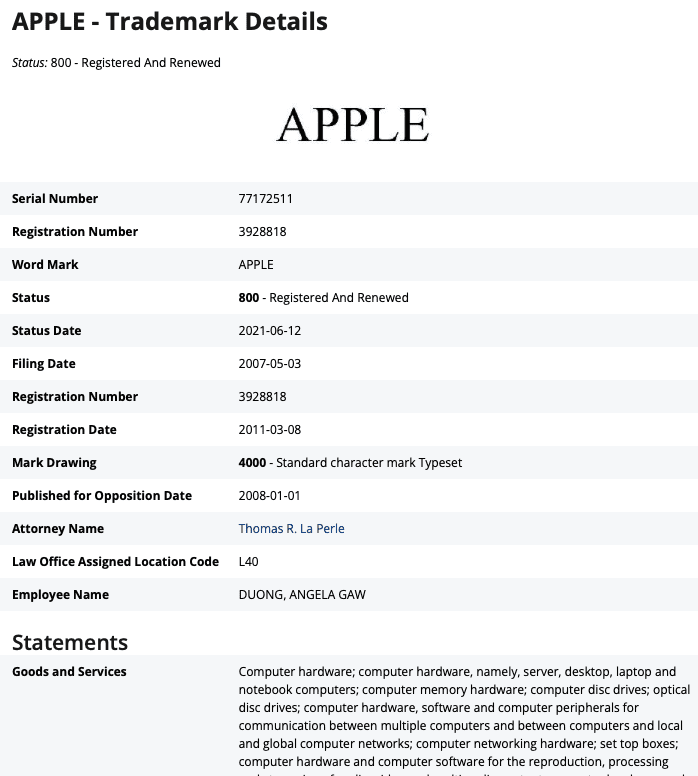
What Happens After Your Trademark Application is Approved?
Once your trademark application is approved by the United States Patent and Trademark Office (USPTO), you officially gain exclusive rights to use your brand name, logo, or slogan for the specified class of goods or services. Here’s what happens next:
1️⃣ You Receive an Official Certificate of Registration
✔ The USPTO will mail you an official Certificate of Registration confirming that your trademark is now federally protected.
✔ This document serves as legal proof of your trademark rights and should be kept in your records.
✔ You do not need a social security number or additional documentation once it’s issued.
2️⃣ You Can Start Using the ® Symbol
✔ Before approval, you could only use ™ (trademark) or SM (service mark) to claim common law rights.
✔ Once approved, you can legally use the ® (registered trademark) symbol, which provides full legal protection and helps prevent trademark infringement.
✅ Where to Display the ® Symbol:
- On your website, logo, or packaging
- On marketing materials, advertisements, and business cards
- In contracts or partnership agreements
- Anywhere your brand identity is visible
3️⃣ Your Trademark is Listed in the USPTO Register of Trademarks
✔ Your trademark is now included in the USPTO’s public database, making it easier for others to see that it is protected.
✔ This discourages businesses from filing for a similar trademark.
4️⃣ You Must Maintain Your Trademark
To keep your trademark active, you must file periodic maintenance documents with the USPTO:
📌 Between the 5th and 6th year:
- Declaration of Use (Section 8) – Confirms you are still using your trademark.
📌 Between the 9th and 10th year:
- Renewal Application (Section 9) – Extends protection for another 10 years.
- After the first renewal, trademarks must be renewed every 10 years.
⚠️ Failure to submit these documents will result in the cancellation of your trademark.
How to Type the Registered Trademark Symbol (®) on Mac & Windows
The registered trademark symbol (®) is important for businesses with an approved trademark registration from the United States Patent and Trademark Office (USPTO). Here’s how you can easily type it on both Mac and Windows computers.
📌 On a Mac: How to Type ®
There are two easy ways to type the registered trademark symbol on a Mac:
1️⃣ Keyboard Shortcut Method
- Press Option (⌥) + R
- The ® symbol will appear.
2️⃣ Using Character Viewer
- Click on Edit in the menu bar.
- Select Emoji & Symbols (or press Control + Command + Space).
- Type “Registered” in the search bar.
- Click on ® to insert it.
📌 On Windows: How to Type ®
There are multiple ways to insert the registered trademark symbol on a Windows PC:
1️⃣ Keyboard Shortcut Method (Numeric Keypad Required)
- Hold Alt and type 0174 (on the numeric keypad).
- Release Alt, and ® will appear.
2️⃣ Character Map Method
- Press Win + R, type Char map and hit Enter.
- Find ® (Registered Trademark Symbol) in the list.
- Click Select → Copy, then paste it where needed.
3️⃣ Using Unicode Input (Only in Some Apps)
- Type 00AE, then press Alt + X in Microsoft Word.
- The code will convert into ®.
Where to Display the Registered Trademark Symbol
After trademark approval, you should add ® to:
✅ Your logo and business name on websites.
✅ Marketing materials (brochures, business cards).
✅ Product packaging and labels.
✅ Legal documents like contracts and agreements.
✅ Social media pages and email signatures.
Frequently Asked Questions About Trademarks
1. What is a trademark?
A trademark is any word, name, symbol, device, or any combination thereof, used in commerce to identify and distinguish the goods of one manufacturer or seller from those of others. It serves as a brand identifier for businesses.
2. Why should I register my trademark?
While you can establish rights in a mark based on use in commerce without registration, owning a federal trademark provides several advantages, including legal protection, exclusive rights, and a legal presumption of nationwide ownership.
3. How do I register a trademark?
To register a trademark, you must apply with the United States Patent and Trademark Office (USPTO). The process involves submitting details about the mark, selecting the appropriate class of goods or services, paying the required fees, and responding to any office actions.
4. What is the difference between the ™, SM, and ® symbols?
- ™ (Trademark) – Used for unregistered trademarks related to goods.
- SM (Service Mark) – Used for unregistered marks related to services.
- ® (Registered Trademark) – Used only after the USPTO officially registers your trademark.
5. Do I need to conduct a trademark search before applying?
While not required, a trademark search is highly recommended to ensure your mark doesn’t conflict with existing similar trademarks, reducing the chances of application rejection or legal disputes.
6. How long does the trademark registration process take?
The entire process typically takes 8-12 months, but delays can occur if the USPTO issues an office action or if opposition arises during the publication phase.
7. How much does it cost to register a trademark?
The USPTO filing fee ranges from $250 to $350 per class of goods or services. If you hire RetireCoast or a trademark attorney or a third-party service, additional fees may apply.
8. Can I register a trademark without using an attorney?
Yes, you can file a trademark application yourself. However, using an attorney or a third-party service like RetireCoast can reduce errors and improve your chances of approval.
9. What happens after I submit my trademark application?
Once submitted, the USPTO assigns an examining attorney to review your application. If no issues arise, it will be published in the Official Gazette for opposition. If unchallenged, the USPTO will issue a Certificate of Registration.
10. What is the difference between state and federal trademark registration?
A state trademark only protects your mark within that state, while a federal trademark provides nationwide protection and stronger legal rights.
11. Is registering a business name with the state the same as trademark protection?
No, registering a business name or DBA (Doing Business As) with the state government does not provide trademark protection. You must apply for a registered trademark separately through the USPTO.
12. Can I register a trademark before using it in commerce?
Yes, you can file an “Intent to Use” (ITU) application if you haven’t started using your mark but plan to do so. However, you will need to file a Statement of Use before final registration.
13. How do I maintain my trademark registration?
- File a Declaration of Use (Section 8) between the 5th and 6th year.
- File a Renewal Application (Section 9) every 10 years.
14. What should I do if someone infringes on my trademark?
- Send a cease-and-desist letter.
- File a complaint with the USPTO.
- Take legal action in federal court.
15. Can I use my trademark in other countries?
No, a U.S. trademark only protects you within the United States. If you need international protection, you must register in other countries separately or apply through the Madrid Protocol.
16. Will a service mark (℠) protect my consulting business?
It will help but does not have the same degree of protection as a ™. A service mark (℠) identifies a service rather than a product, but federal registration is recommended for stronger legal protection.
17. How long does it take to receive an approved trademark application?
It can take up to 18 months, with the average being about 12 months. This timeframe assumes that the application has been correctly submitted without errors or office actions.
18. Should I first trademark the business name before the logo?
Yes, in most cases, it’s best to trademark the business name first before the logo. A word mark protects the name in all fonts, styles, and colors, while a design mark protects only the specific logo.
19. Are there separate charges to trademark the name and logo?
Yes, trademarking the name and logo are separate filings, and each requires a separate fee.
20. How can I create the SM symbol on my Mac computer?
The SM (Service Mark) symbol can be added manually on a Mac by using the Emoji & Symbols menu or by copying and pasting ℠.
When to use TM, SM, and circleR
We have not discussed the use of the SM or service mark. This unique device was created to help if you have a service business to protect your brand name or slogan. The following explains the differences between the marks and when to use each:
Differences Between TM, SM, and ® Symbols: When to Use Each and Their Legal Protections
If you’re branding a business, product, or service, you may wonder whether to use ™ (trademark), SM (service mark), or ® (registered trademark). Each symbol has different uses and legal implications.
1️⃣ What is the Difference Between TM, SM, and ®?
| Symbol | Meaning | Used For | Legal Protection? | Government Registration Required? |
|---|---|---|---|---|
| ™ (Trademark) | Identifies a brand name, logo, or slogan for goods | Products (e.g., clothing, electronics, food, software) | Limited common law rights (only in the areas where it is used) | ❌ No (but stronger if registered) |
| SM (Service Mark) | Identifies a brand name, logo, or slogan for services | Services (e.g., consulting, legal, healthcare, financial services) | Limited common law rights (only in the areas where it is used) | ❌ No (but stronger if registered) |
| ® (Registered Trademark) | A federally registered trademark | Products or services that have completed USPTO trademark registration | ✅ Nationwide legal protection and exclusive rights | ✅ Yes, only after USPTO approval |
2️⃣ When to Use TM, SM, and ® Symbols?
✔ Use ™ (Trademark) when:
- You have a product-based business (e.g., selling physical goods or software).
- You haven’t registered the mark with the USPTO but still want to claim rights.
- You want to deter competitors from using a similar name.
✔ Use SM (Service Mark) when:
- You have a service-based business (e.g., consulting, coaching, legal, healthcare).
- Your brand name or slogan represents services rather than physical goods.
- You haven’t registered your mark but want to assert common law rights.
✔ Use ® (Registered Trademark) when:
- Your trademark has been officially approved by the USPTO.
- You want nationwide legal protection and the ability to sue for trademark infringement.
- You want to prevent others from using a similar mark in your industry.
3️⃣ Does Using SM Offer Any Legal Protection?
- Using SM establishes common law trademark rights, meaning you can claim ownership within the geographic areas where your business operates.
- However, common law protections are weaker than federal trademark rights.
- If a competitor federally registers the same or a similar name, they can block you from using it nationwide.
- To ensure stronger protection, service-based businesses should apply for federal trademark registration and use the ® symbol once approved.
4️⃣ Summary: Which Symbol Should You Use?
- If you sell products, start with ™ until you register your trademark.
- If you offer services, use SM until you register your trademark.
- If your mark is federally registered, always use ® for maximum protection.
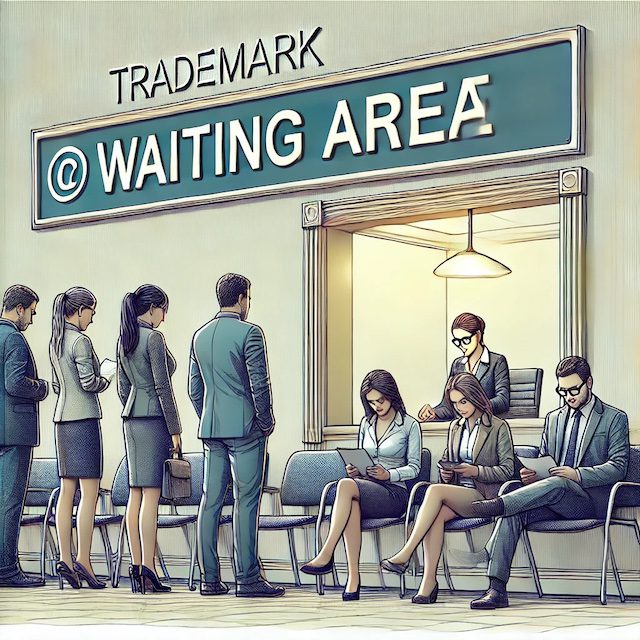
How to Protect Your Business While Waiting for Trademark Approval
Since it can take 12-18 months for a trademark to be fully approved by the United States Patent and Trademark Office (USPTO), businesses need strategies to safeguard their brand in the interim. Here’s what you can do:
1️⃣ Use the ™ or SM Symbol Immediately
Even before your trademark is officially registered, you can start using:
✔ ™ (Trademark) – If you’re selling products
✔ SM (Service Mark) – If you’re offering services
💡 Example:
If your brand name is “Elite Consulting,” you can display it as Elite Consulting℠ in marketing materials, on your website, and on social media.
✅ Why It Helps: This signals to others that you are claiming trademark rights under common law, helping deter copycats.
2️⃣ Establish Common Law Trademark Rights
✔ First-to-Use Protection – U.S. trademark law follows the first-to-use principle, meaning if you start using your mark in commerce, you automatically gain limited trademark rights.
✔ Geographic Protection – Common law trademarks only apply where your business operates, so expansion into other regions might not be covered.
✅ Why It Helps: If someone else applies for the same name, you may still have superior rights based on prior use.
3️⃣ Keep Strong Documentation
✔ Save proof of use, including:
- Business invoices
- Website and domain registration
- Social media accounts
- Marketing materials
- Customer communications
- Communication with RetireCoast or other facilitator
✅ Why It Helps: If a dispute arises, documentation can prove your early use of the trademark.
4️⃣ Secure Your Digital Presence
✔ Register your domain name – Ensure your website matches your brand.
✔ Claim your brand on social media – Prevent others from taking your name.
✔ Set up Google Alerts – Monitor online mentions of your business name.
✅ Why It Helps: Protects your brand from cybersquatters and imitators.
5️⃣ Consider Filing for State Trademark Protection
✔ State trademark registration offers protection within that state, providing some legal backing while waiting for federal approval.
✅ Why It Helps: If someone tries to use your brand name in your state, you have a stronger legal claim before your USPTO registration is finalized.
6️⃣ Send Cease-and-Desist Letters if Needed
✔ If someone starts using a similar trademark, you can send a cease-and-desist letter warning them of your pending application and common law rights.
✔ Consult a trademark attorney if infringement occurs.
✅ Why It Helps: A formal warning can stop competitors early before legal action is needed.
7️⃣ Use the “Intent-to-Use” (ITU) Filing Strategically
✔ If you haven’t started using your trademark, filing an ITU application allows you to reserve the name while you prepare to launch.
✔ After approval, you must submit a Statement of Use proving that your trademark is in commercial use.
✅ Why It Helps: Ensures your brand name is secured, even if you’re still developing your business.
When you feel overwhelmed by all of this, contact RetireCoast, we can help with this process and it is a process.
States offer Trademark and Service Mark Registration
All 50 states offer trademark and service mark registration. The protection only exists within the state. This works for people who are doing business in only one state. It is less expensive and will be approved much faster than at the federal level.
You may want to apply in your state which can show that you are protected there during the time that your federal application is being worked on. A lot of retail businesses such as restaurants can benefit from the state program and may not need a national registration. RetireCoast can help you with this.
Did we answer all of your questions?
Please leave comments and tell us how we can improve this article and others at RetireCoast.com Check out our separate website for Starting a Business After Retirement for tools and support. Learn why I started a business after retirement.
Are you ready to start your Business After Retirement?Time for the Business Formation Stage
Discover more from RetireCoast.com
Subscribe to get the latest posts sent to your email.







